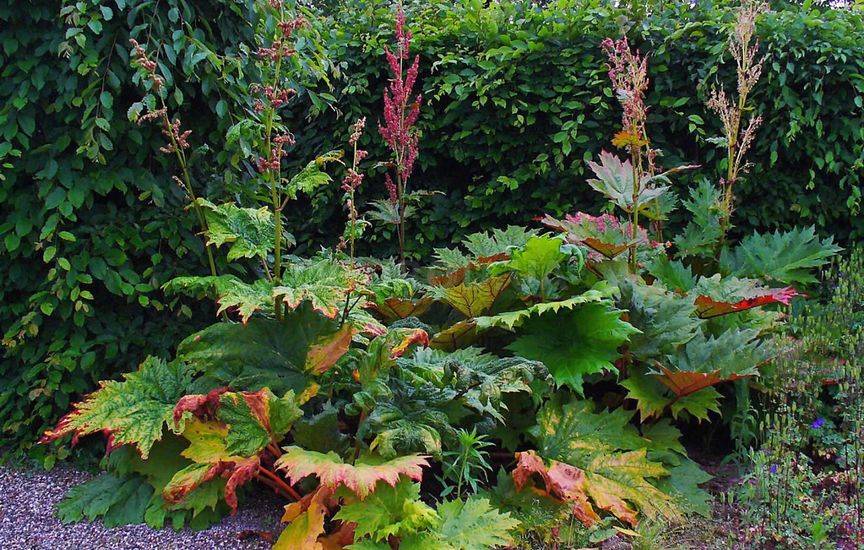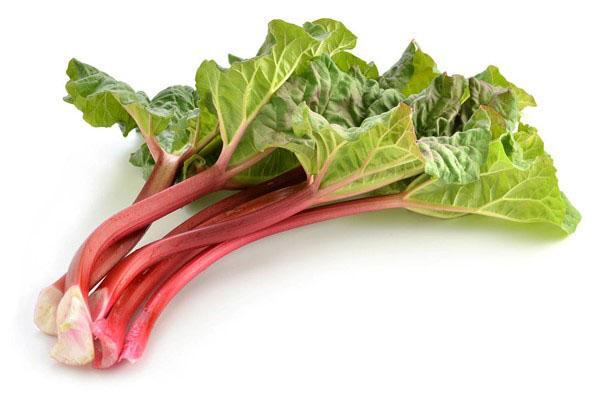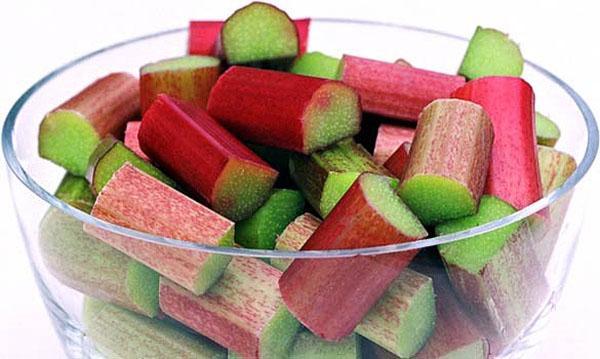How to grow rhubarb in a summer cottage and get a rich harvest
 Growing rhubarb on your own plot is a task that any gardener can do. Buckwheat perennials provide natural nutrients in early spring. Some rhubarb varieties ripen quite early when other vegetables are not yet available.
Growing rhubarb on your own plot is a task that any gardener can do. Buckwheat perennials provide natural nutrients in early spring. Some rhubarb varieties ripen quite early when other vegetables are not yet available.
Read also the article: rhubarb benefits and harms to a man's body!
Rhubarb characteristics

Rhubarb is similar in nutritional value to apples. The plant's minerals and vitamins, pectin and organic acids are beneficial for humans. This vegetable has diuretic and laxative properties and is used to prevent vomiting, cleanse the liver and excrete bile. In May, when there are still no vegetables and fruits, rhubarb can already be used in salads, for making stewed fruit, jelly, kvass and wine.
 There are several varieties of rhubarb that differ in the quality of the petioles (red and green) and the ripening time:
There are several varieties of rhubarb that differ in the quality of the petioles (red and green) and the ripening time:
- Moscow 42;
- Victoria;
- Tukumsky 5;
- Orgsky 13;
To use the vegetable longer, you should plant at least two varieties with different ripening periods in the garden.
 There are two ways to propagate rhubarb:
There are two ways to propagate rhubarb:
- through seedlings grown from seed
- dividing roots
Planting and caring for rhubarb
 When choosing a place for planting and nursing in the open field, the following properties of rhubarb should be considered:
When choosing a place for planting and nursing in the open field, the following properties of rhubarb should be considered:
- Rhubarb is a perennial plant, moreover, it does not require transplantation and does not tolerate it well, it grows in the same place for 10-15 years, giving a good harvest.
- Tolerates planting in the shade, but grows fuller, more beautiful in sunny or slightly shaded areas, and the stems taste better.
- The plant is hygrophilous, but does not tolerate waterlogging. Therefore, you should not plant it in low places where water can stagnate or near water bodies.
- Prefers fertile and loose soils with a neutral pH. On sandy or clayey heavy soils, as well as acidic or alkaline, rhubarb will not grow well.
Planting and caring for rhubarb is not particularly difficult. The breeding method is chosen first.
Vegetative breeding method
Adult 3-4 year old healthy plants are used for vegetative propagation. It is not recommended to choose old bushes for propagation. Having carefully dug a bush, cut the root into several parts with a sharp knife, each of which should have at least 1-2 buds of growth. It is better to sprinkle the resulting damage on the rhizome with wood ash or activated carbon powder. You can not dig out the bushes and divide them right in the ground with a shovel. The separated parts of the plant are planted in spacious holes, covered with earth and pressed tightly, the growth bud should remain on the surface. It is advisable to pour a little humus into the prepared holes before planting or compost.
The division of the bush is carried out in the early spring, when the soil warms up a little, or in the middle of autumn, so that the plant can take root before the onset of cold weather.
Seed propagation is used to grow a new variety or plant for the first time.
 Rhubarb is grown from seeds through seedlings, which are obtained from seeds pre-soaked before swelling. Germinate seeds under damp gauze or a cloth, periodically moistening it. After sprouting about 2 cm in length, the seeds are dried and then sown. Seeds are planted in pre-moistened soil. On the fourth or fifth day after sowing, the first sprouts of rhubarb can be seen. The burial depth should not exceed 3 cm. When growing rhubarb, the consumption is up to 4 grams of seeds per square meter. Rhubarb is planted in rows at a distance of 25 cm. After the leaves appear on the shoots, they are thinned out. The distance between shoots should be approximately 20 cm.
Rhubarb is grown from seeds through seedlings, which are obtained from seeds pre-soaked before swelling. Germinate seeds under damp gauze or a cloth, periodically moistening it. After sprouting about 2 cm in length, the seeds are dried and then sown. Seeds are planted in pre-moistened soil. On the fourth or fifth day after sowing, the first sprouts of rhubarb can be seen. The burial depth should not exceed 3 cm. When growing rhubarb, the consumption is up to 4 grams of seeds per square meter. Rhubarb is planted in rows at a distance of 25 cm. After the leaves appear on the shoots, they are thinned out. The distance between shoots should be approximately 20 cm.
 In the future, care for the seedlings consists in watering, if necessary, weeding, loosening, fertilizing with fertilizers. In autumn, seedlings up to 30 cm high with three to four leaves are obtained.
In the future, care for the seedlings consists in watering, if necessary, weeding, loosening, fertilizing with fertilizers. In autumn, seedlings up to 30 cm high with three to four leaves are obtained.
After winter, the seedlings are dug out for planting in holes at a distance of up to 1 m. The soil should fit snugly to the roots of the planting material. In this case, it is recommended to lower the upper kidney under the ground no more than two centimeters. If the soil is not wet, then the planting material is watered. In the future, rhubarb is watered (if necessary) and the arrows are removed. The soil is loosened and weeded. To obtain a good harvest, fertilizing with fertilizers is desirable. Fertilize the soil every 3-4 years, adding 1-2 buckets of organic matter per square meter.
 Rhubarb can be damaged by pests (elephant, flea, bug) and diseases (ascochitis, gray rot).
Rhubarb can be damaged by pests (elephant, flea, bug) and diseases (ascochitis, gray rot).
Poisonous chemicals against diseases and pests can be used only after collecting cuttings for nutrition.
In order not to weaken the plant and get a stable harvest for a long time, it is advisable to harvest the crop (petioles) from the second year after planting. Harvesting takes place several times during the season. Cuttings are broken out at the base when their thickness reaches more than 1.5 cm and a length of 30 cm. In the first three years, the yield is 1-2 kg of petioles, and in the following years - up to 6 kg from one bush.